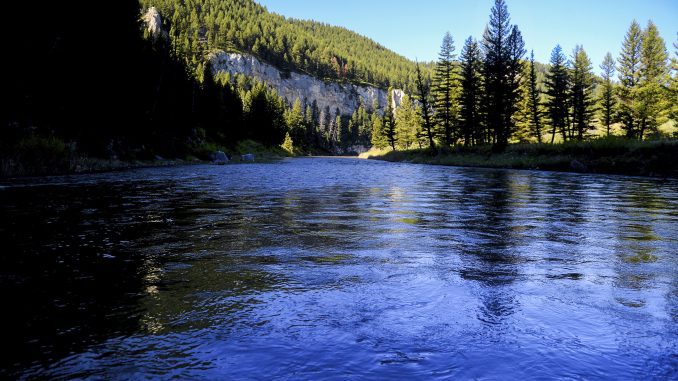
HELENA, Mont. — Environmental regulators on Thursday approved plans for a copper mine in central Montana that marks a major milestone in a long-running dispute. But the move will likely be challenged by environmental advocates who worry about the mine’s proximity to one of the state’s most popular recreational rivers.
The head of the Montana Department of Environmental Quality told The Associated Press that the permits for the Black Butte Copper Project near a tributary of the Smith River will be the most stringent ever issued for a hardrock mine in Montana.
“I can tell you that our team here at DEQ has really been motivated to put this application through the wringer to determine whether it indeed would comply with state laws,” Shaun McGrath told the AP, cautioning against judging the mine against older projects that have become Superfund sites.
The state agency will issue permits to Tintina Montana Inc., a subsidiary of Australian mining company Sandfire Resources, for an underground mine north of White Sulphur Springs and 19 miles from the Smith River. The mine’s operating permit will be issued once a reclamation bond is posted, officials said.
“Our project design robustly meets and exceeds some of the strictest environmental requirements for mining worldwide,” said Rob Scargill, Sandfire America’s CEO and vice president of project development.
With the decision, Sandfire will seek roughly $300 million to develop the project, Scargill said. About $70 million has already been invested, and the company expects to bring in about $2 billion in revenue. An estimated $1 billion would stay in Montana in the form of taxes, wages, leases and other services during the 13-year life of the mining operation, he said.
Conservationists, sporting groups and environmental advocates have campaigned to shut down the project, concerned that it will harm the Smith River. The blue-ribbon fishery is so popular the state holds an annual lottery for permits to float the river.
The 110-mile Smith River runs through a limestone canyon and a scenic valley before flowing into the Missouri River south of Great Falls.
“We’ve always maintained that this is a terrible spot for a mine, and no matter how they try and engineer it we are very concerned about the risks it poses to the water and the ecology of the Smith River and the thriving outdoor economy that … is dependent upon clean water and wild country,” said Derf Johnson with the Montana Environmental Information Center. The group is part of a coalition that opposes the mine over concerns that it will harm water flows and trout spawning in Sheep Creek, the main tributary to the Smith River.
The coalition is evaluating whether to challenge the permits in court, Johnson said.
The proposed underground mine is on private land and would extract 15.3 million tons of copper-laden rock and waste over 15 years — roughly 440 tons concentrate a day.
The material would be shipped overseas for processing, the permit applications state.
To protect the river and its watershed, state officials are requiring Tintina to supplement water flows affected by the mine, monitor water quality and temperature.
The Department of Environmental Quality is also requiring Tintina to store water that comes into contact with acid-producing minerals in a double-lined, cemented tailings facility, to backfill mined areas with a mix of tailings and cement as work is completed and to seal mine tunnels and entryways to prevent groundwater flows across acid-producing minerals.
David Brooks, the executive director of Montana Trout Unlimited, argued the tailings facility will eventually leak, creating acid mine drainage. He also said the mine will use more water than is being reported and the water rights they plan to purchase won’t make up for what will be removed from the area.



